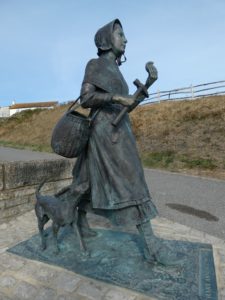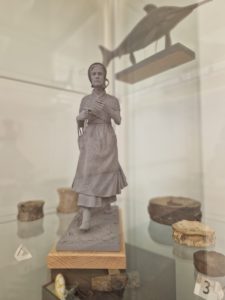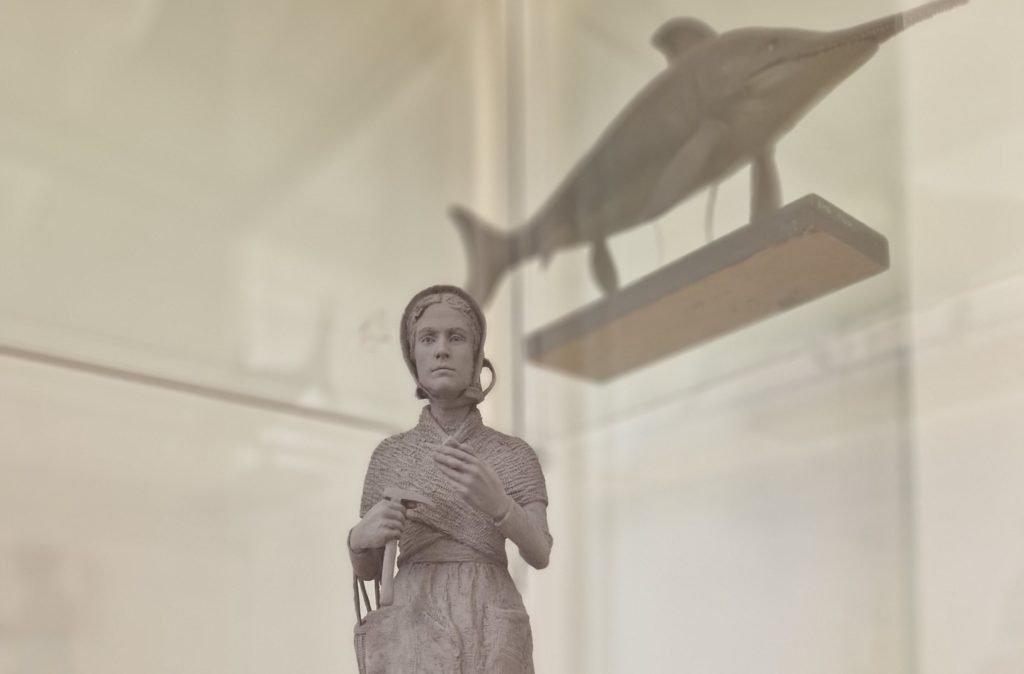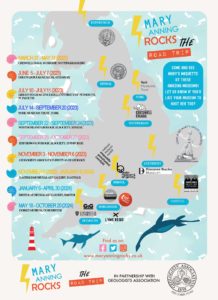In May 2022 Professor Alice Roberts unveiled a larger than life-sized statue of Mary Anning. But who was Mary Anning and why do we have a display about her here in Aylesbury?
Mary Anning (1799 – 1847) lived in Lyme Regis on the Dorset coast where she made a meagre living collecting and selling fossils. But Mary was far more than just a fossil collector. She was a pioneering female geologist who, despite coming from a poor background with limited access to education, contributed greatly to our scientific understanding of the prehistoric world.
Mary discovered some very important fossils including the first correctly identified ichthyosaur, the first complete plesiosaur and the first pterosaur found in Britain. Geologists came from far and wide to purchase her fossils, many of which are now housed in museums across the world. Mary’s discoveries and insight formed the basis for many key scientific papers on palaeontology but, as a woman, her role was rarely credited.
Recent reassessments of Mary’s work have rightly identified her as a pioneering woman of science, a key player in the early development of palaeontology and an inspirational role model of relevance to this day.

While her statue now stands in Lyme Regis as testament to her contribution to science, the clay maquette (produced as part of the commissioning process for the statue) is currently on tour around Britain to help raise awareness of the achievements of this remarkable woman.
Watch the unveiling of the statue in this video created by Mary Anning Rocks

Mary Anning road trip
Mary Anning’s maquette has been on tour since 2022 (organised by Mary Anning Rocks and the Geologists’ Association) with each venue providing its own accompanying display. The maquette will be here until Wednesday 5th July.





